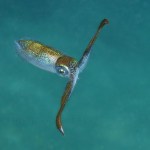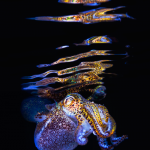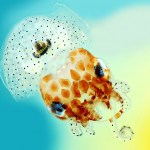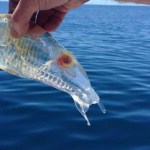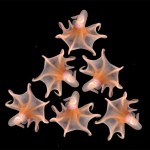Organisms
I was reading this account of an encounter between three cuttlefish -- a consort male escorting a female, who is challenged by an intruder -- and the story was weirdly familiar.
The intruder’s pupil dilation and arm extension began the first of three brief bouts over the course of about four minutes, each with escalating levels of aggression. The consort male met the initial insult with his own arm extension and — as only color-changing animals like cuttlefish can do — a darkening of his face. Then both males flashed brightly contrasting zebra-like bands on their skin, heightening the war of…
And we liked it!
The Nautilus Files
That isn't the Carrizo Plain National Monument.
It's obviously Oz.
Did you know cephalopods may have traded evolution gains for extra smarts? I didn't either. I don't believe it, anyway. The paper is fine, though, it's just the weird spin the media has been putting on it.
The actual title of the paper is Trade-off between Transcriptome Plasticity and Genome Evolution in Cephalopods, which is a lot more accurate. The authors discovered that there's a lot of RNA editing going on in coleoids. The process is not a surprise, we've known about RNA editing for a long time, but the extent in squid is unusual.
RNA editing is basic college-level stuff, so if your…
What it's like to be an octopus? This review of Peter Godfrey Smith's book, Other Minds: The Octopus, the Sea, and the Deep Origins of Consciousness, captures perfectly why I've been fascinated by them -- they're the closest thing to aliens we've got.
Unlike cetaceans – whose sentience it is possible to imagine, partly because they demonstrate our mammalian connections so vividly and physically – cephalopods are entirely unlike us. “If we can make contact with cephalopods as sentient beings, it is not because of a shared history, not because of kinship, but because evolution built minds…
Is anyone else seeing this picture and immediately wondering what molecules regulate the orderly dispersal of those well-distributed pigment cells?
BBC
Oooh, beautiful. Starfish larvae are covered with beating cilia that they use to swim, and also to swirl bacteria towards their mouth…and in this video that visualizes the motion generated by the cilia, you can see that they do both at the same time.
Apparently, flamboyant cuttlefish are born looking snazzy.
Monterey Bay Aquarium
I lack any tattoos, but on the day we can transfect human skin cells with the machinery to make chromoplasts and chromatophores, I'll be first in line at the local genetic modification parlor.
phys.org


